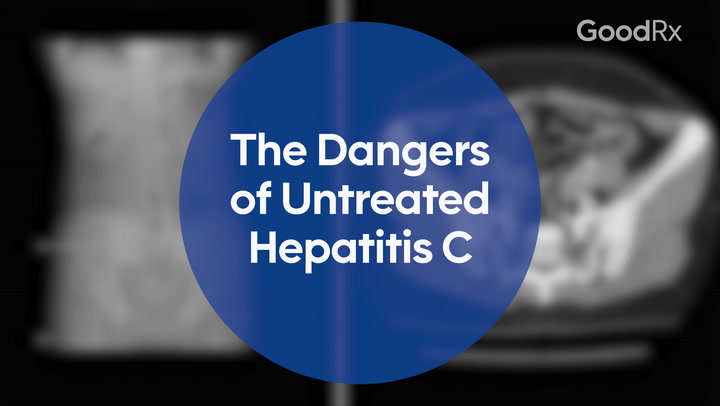
Alcoholic Hepatitis and Early Signs of Liver Damage
Key takeaways:
Alcoholic hepatitis is a potentially serious complication of alcohol use.
Alcoholic hepatitis is typically caused by repeated heavy alcohol use.
Many people can recover from alcoholic hepatitis with treatment, but the most serious cases can result in life-threatening liver failure.

Alcoholic hepatitis (AH) occurs when the liver becomes inflamed because of heavy alcohol use. It is different from chronic liver disease like cirrhosis or liver failure that results from years of heavy drinking. But it is still one of the ways that alcohol can damage our liver, and it can occur before or after the development of liver failure.
Let’s first review the spectrum of liver disease caused by alcohol, and then we’ll examine the causes, symptoms, and treatment of AH.
The spectrum of alcohol-induced liver disease
Alcohol use can lead to several different types of liver problems:
Alcohol-associated fatty liver disease is a condition in which the liver accumulates excess fat deposits and is typically the earliest sign of alcohol-induced liver disease. It can be thought of as the precursor to cirrhosis. It usually doesn’t cause any symptoms, and is even reversible within a couple weeks if alcohol consumption is stopped in this stage.
Alcoholic cirrhosis is the result of ongoing liver damage over time. It is a more serious, permanent type of liver damage that progresses from fatty liver disease. It can lead to other serious conditions, such as liver cancer and liver failure.
Alcoholic hepatitis is a condition in which the liver gets suddenly inflamed. While the above two conditions are long-term in nature, AH occurs more quickly. It can vary in severity but is treatable. This is the condition we will discuss here.
Prescription Savings Are Just the Beginning
See what other benefits you qualify for—from cashback cards to cheaper insurance.

How much drinking does it take to develop alcoholic hepatitis?
The Centers for Disease Control and Prevention (CDC) estimates that 1 out of every 6 people drinks alcohol excessively. Some form of liver disease develops in over 90% of heavy drinkers, but only a small fraction of them will develop alcoholic hepatitis.
So what amount of alcohol causes AH? Before we talk about the number of drinks, let’s clarify what a “drink” means. A standard drink is:
12 oz. of beer, usually about 5% alcohol
5 oz. of wine
1.5 oz. of liquor
Keep in mind that some beers have a lot more than 5% of alcohol in them, and mixed drinks can have a lot more than 1.5 oz. of liquor, so a heavy beer or strong cocktail might count for more than 1 drink.
AH is most common among people who drink at least 7 drinks a day for 20 years. But AH can still affect people who have a shorter history of alcohol use or drink less than this per day. For example, one large study showed that drinking more than 6 drinks a week increases your risk for liver disease, which includes AH.
Signs and symptoms of alcoholic hepatitis
Symptoms of AH usually start with pain in your abdomen due to swelling of the liver, which is in the upper right side of the abdomen. Often, this pain can be mild in the early stages of the condition. Many times, people do not seek medical evaluation until they start to develop the more noticable signs of liver failure. These signs include:
Jaundice, which is a yellow discoloration of the eyes and skin
Abdominal swelling and bloating
Leg swelling
Confusion or excessive sleepiness
Treatment of alcoholic hepatitis
Treatment for AH largely depends on the progression and severity of each individual’s condition. But no matter how serious, most people diagnosed with AH will be admitted to a hospital to be closely monitored. This is because AH can lead to serious complications, like reduced kidney function and blood clotting.
In severe cases of AH, a person might need corticosteroids, which are strong anti-inflammatory medications that can help stop the liver inflammation that causes the condition.
Another benefit to hospitalization is that people with AH can receive treatment for alcohol withdrawal. Avoidance of alcohol use is the most important way to prevent progression of AH, but this can be hard for people who are used to drinking every day. People who develop AH tend to also be at risk for alcohol withdrawal, which is a potentially fatal condition without the right medication.
How serious is alcoholic hepatitis?
About 1 in 3 people with serious cases die from this illness. But how do we know if someone with AH is in serious condition? Providers assess this based on signs of liver damage on physical exam and blood tests for liver function and blood clotting function. The high mortality rate is partially attributed to the fact that many people who develop AH already have underlying liver failure from their alcohol use. The good news is that people with serious cases, with prompt medical care, can still recover from AH.
The bottom line
Alcoholic hepatitis is a serious condition that results from heavy alcohol use. If you develop signs or symptoms of this condition, it is important to get the help of your provider or an emergency clinic right away. The best way to prevent AH is to cut back or stop drinking alcohol. If you think you have a problem with alcohol use, talk with a healthcare provider or check out some resources that can help.
Why trust our experts?


References
Basra, S., et al. (2011). Definition, epidemiology and magnitude of alcoholic hepatitis. World Journal of Hepatology.
Becker, U., et al. (1996). Prediction of risk of liver disease by alcohol intake, sex, and age: A prospective population study. Hepatology.
Centers for Disease Control and Prevention. (2022). Excessive alcohol use.
Gao, B., et al. (2011). Alcoholic liver disease: Pathogenesis and new therapeutic targets. Gastroenterology.
Jinjuvadia, R., et al. (2015). Trends in alcoholic hepatitis related hospitalizations, financial burden, and mortality in the United States. Journal of Clinical Gastroenterology.
National Institute on Alcohol Abuse and Alcoholism. (n.d.). Find your way to quality alcohol treatment.
National Institute on Alcohol Abuse and Alcoholism. (n.d.). What is a standard drink?










